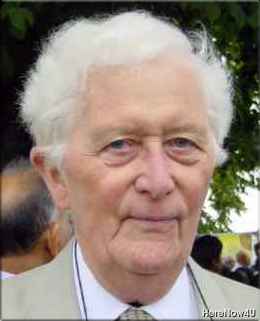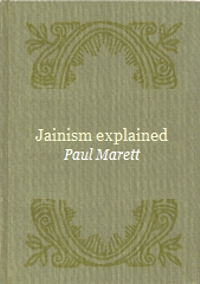
In the second chapter we traced the history of Jainism in its earlier centuries. The story is not complete for, even if we had much more space and time, historians are still only slowly unravelling the confused history of ancient India.
In this chapter we shall sketch a few of the developments in Jainism in the history of India. Obviously we can only touch on this subject. One of the reasons why it is difficult to trace the history of Jainism quickly is that India for much of the past 2000 years was not a single state but a large number of small, and some large, states with shifting frontiers each with its own history.
The major event, of course, was the gradual extension of Jainism from its homelands in eastern India into the south, and then into western India, Gujarat and Rajasthan. Unfortunately we know little about how this actually happened. Doubtless Jain Monks, travelling as always on foot, crossed India and made converts in the lands they passed through. Probably Jain businessmen, then as now, took their faith to distant parts. Other travellers also might have helped. Certainly Jainism had reached Gujarat more than 2000 years ago.
From the early fourth century A.D. until around 600 A.D. northern India, down as far as modern Bombay, was under the control of the emperors of the Gupta dynasty. Doubtless the unified control facilitated contacts across India. In the Gupta period Gujarat seems to have become the most important center of Jainism in India if we are to judge from the fact that the great council, when the holy scriptures were finally put into writing around 460 A.D., was held at Valabhi in Gujarat. Some sixty or seventy years later Jain scriptures were read at a ceremony of mourning for the death of the king's son even though the king himself was not a Jain. Apart from Gujarat, Jainism was well established in many parts of India by the Gupta period: it was certainly already present in Rajasthan by then.
An unusual account of India was given by a visitor from China who travelled there in the earlier seventh century A: D. He has many references to Jains and it does appear that, at least in the places which he visited, the Digambara were at that time the stronger section. However the Svetambara were beginning to increase in Gujarat and Rajasthan, particularly because they gained the support of the kings of Gujarat. Many great Jain scholars contributed to Jain learning as well as to many other subjects. One of the greatest was the famous Acharya Hemacandra from Gujarat (1089-1172 A.D.). The king of Gujarat, Kumarapala, was his staunch follower. Hemacandra wrote very widely on a range of scientific and literary subjects, commentaries on ancient texts, poetry, works on logic, yoga and grammar, and a lot more. He wrote a major work on the duties of both lay people and monks.
Large number of sects developed amongst the Svetambara from the seventh century A.D. onwards, traditionally they numbered eighty-four, though not many of them survive today. They certainly attest to the vitality of Jainism in these centuries, a golden age for the faith.
In south India, from the fifth century onwards for some seven hundred years, Jains also received the patronage of royalty and many kings favoured them in one way or another. Great poets and writers flourished. Under royal patronage Jinasena wrote a great unfinished epic which was completed by his pupil Gunabhadra in the year 897 A.D. This long work includes much moral teaching on the duties of a Jain and is much respected by the Digambara scholars. In the south one of the great centers of Jainism was Sravana Belgola, noted for its colossal Jain image, still an important center of pilgrimage today, and in earlier times a center for Jain influence across the southern regions. Jainism flourished during this period with large numbers of adherents in all classes of society.
However Jainism began to lose ground eventually. The development of popular personal religious movements in Hinduism with a warm devotion to a god led many away from the religion of Mahavira. The Hindu followers of both Vishnu and Siva increased in numbers and the contest between the newly revived Hindu cults and the Jains became strong, then bitter and finally in some cases led to violence against the Jains. Although we must not overstress this (for Hinduism and Jainism have coexisted happily nearly always), Jainism in south India did suffer a decline from which it never recovered, at least to its earlier strength. Dedicated and faithful Jains continued to practice their religion with enthusiasm, as they do today, but their numbers were fewer.
In the north, too, Jainism lost ground. From the thirteenth century A.D. the Muslim conquests in north India affected Jains badly. At times Jain temples (and Hindu ones as well) suffered damage or destruction by the conquerors. At the same time there seems to have been a decline in religious fervour and practice. Numbers declined and Jainism became confined mainly to the merchant and business class.
However, again we must not overstress the decline.; Jainism did decline in numbers, and at times in standards, Jains continued to produce great scholars and many devoted saints. Jains, as a pacific group in society, valued for financial and business acumen, enjoyed a fair measure of tolerance and, indeed, were not infrequently employed in important government positions. Temple building and the arts continued to flourish. In the sixteenth century the Mogul emperor Akbar, the greatest Mogul ruler, although a Muslim, had close contacts with a Jain monk Hirvijaya Suri. Akbar called Hirvijaya to his court in 1582 and the monk and the emperor had long conversations on questions of religion and philosophy. Inspired by these the emperor was moved to impose restrictions on the killing of animals in his domains and himself gave up his favourite sport of hunting.
While the Muslims dominated north and central India, in the south the great Hindu empire of Vijayanagar ruled from the early fourteenth century to the late sixteenth century A.D. Here the Jains were protected by the rulers and many took an important part in public life, in government and the army, as well as in finance, trade and learning. In view of the Jain insistence on non-violence, it may become as a surprise to some to learn that Jain laymen have sometimes been prepared to hold military positions. The question whether the rules of ahimsa, non-violence, permit the necessary defence of one's country is usually answered by the argument that a measure of necessary harm is unavoidable for the lay person, though of course strictly precluded for the monk or nun. In all honesty, however, we may well question whether the military exploits of some Jain rulers in Indian history have not strayed beyond the bounds of unavoidable violence.
The building of temples and the installation of images has long been a tradition of Jainism but one development has been the emergence of a branch of the Svetambara Jains which does not accept the worship of images. The Sthanakvasi sect originates in the late seventeenth century, though its roots are traced back as far as 1394 in another group which rejected images.
Although the majority of Jains adhere to the ancient rituals and images, the Sthanakvasi, who meet in plain meditation halls, have attracted many adherents and have produced many learned and pious members.
 Dr. Paul Marett
Dr. Paul Marett
